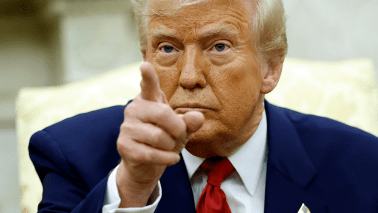
Lloyd Evans charts the death of political satire and looks to where comedy is heading next
Live comedy ought to be extinct. For five years the internet has been waving an eviction order in its face, but despite the YouTube menace, and its threat of death-by-a-thousand-clips, live stand-up is blossoming. You’ll have noticed this if you read newspaper adverts. Eighteen months ago they were full of barmy invitations to take out a loan for 10 times the value of your house, or to ‘buy’ (that is rent in advance for 99 years) a room in a boutique hotel in Prague or a glass-box-with-a-view in Abu Dhabi. These schemes have been replaced with full-page ads promoting comedians on nationwide tours. The scale is vast. Stadiums like Wembley Arena and London’s O2 (née the Dome), usually the preserve of rock stars, are being booked by stand-up comics. Sheffield Hallam’s 14,000-seater stadium will this year host Russell Brand, Al Murray, and Eddie Izzard. The internet has rewritten the commercial rules of comedy just as it has for recording artists. Before YouTube, comics reluctantly toured in order to promote their cash-making DVDs. Now the position has reversed. Recordings make relatively little and the major revenues come from ticket sales.
Happily for the comics there’s a powerful craving for the congregational experience, for public acts of cathartic mirth. Frank Skinner recently hosted a Credit Crunch Cabaret in the West End, top price a tenner, which consciously evoked the austerity of the 1930s. ‘I’m a George Formby fan,’ said Skinner, ‘and I love the idea of him making jokes and pulling us through the Depression and fighting Hitler.’ But the economic blues don’t fully account for the comedy boom, not least because the closer you look at this downturn the less impressive it seems.








Comments
Join the debate for just £1 a month
Be part of the conversation with other Spectator readers by getting your first three months for £3.
UNLOCK ACCESS Just £1 a monthAlready a subscriber? Log in